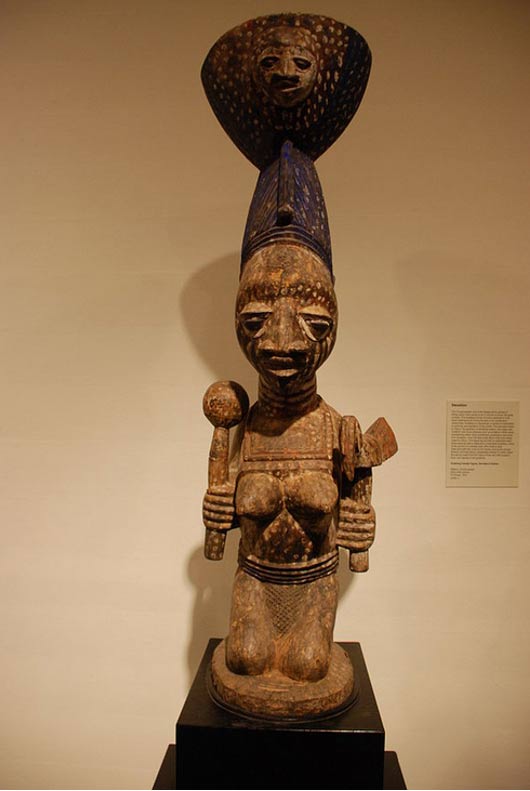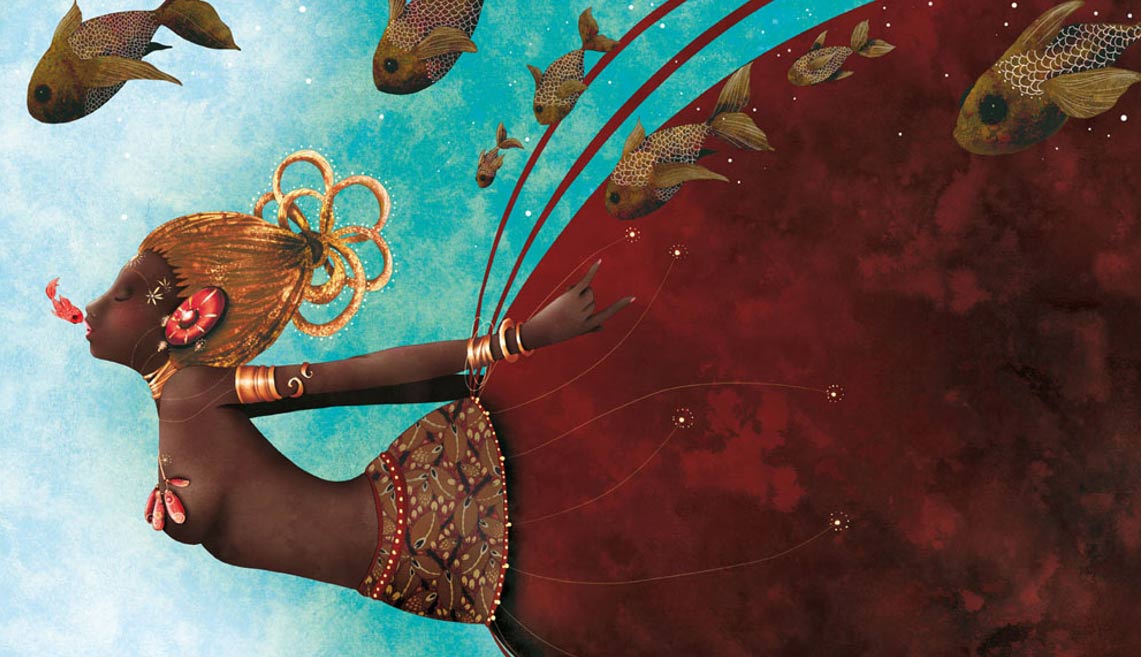Oshun: African Goddess of Love and Sweet Waters
Across many ancient civilizations throughout the world, love was placed under the domain of a certain deity, usually, but not in all cases, a goddess. In the Classical world, for instance, there were Venus and Aphrodite, love goddesses of the Roman and Greek pantheons respectively. In the ancient Near East, love was personified in such goddesses as Ishtar and Astarte. Further afield in West Africa, the Yoruba people believe in a love goddess by the name of Oshun.
The Orisha Oshun
The Yoruba people inhabit the south-western part of modern day Nigeria and the southern part of Benin. Practitioners of traditional Yoruba religion believe in a pantheon of 401 gods (known as Orisha) who govern various aspects of the world and human life. Although Oshun (also spelt Osun) is regarded principally as a goddess of love, there are other aspects to this Orisha as well.
One of the most important roles that Oshun plays is that of the goddess of the sweet waters and the protective deity of the River Oshun in Nigeria. Alongside this river is a sacred grove, probably the last in Yoruba Culture, dedicated to Oshun.
- The Celtic Goddess Epona that Rode Swiftly Across the Ancient Roman Empire
- A Cycle of Life and Death: Slavic Goddesses Morana and Vesna
- Navigating the Realm of an Aztec Water Goddess and One of the Five Suns

Osun river at the Sacred Grove Of Oshun. (Yeniajayiii/CC BY SA 4.0)
Legend of the Osun-Osogbo Sacred Grove
The Osun-Osogbo Sacred Grove is a dense forest on the outskirts of Osogbo town, western Nigeria. In the past, sacred groves were commonly found in areas where the Yoruba lived, and every town would have had one. Over time, these sacred groves were either abandoned or shrank in size, apart from the Osun-Osogbo Sacred Grove.
This sacred grove contains 40 shrines, 2 palaces, as well as many sculptures and works of art. Due to its unique status, the Osun-Osongbo Sacred Grove was inscribed in UNESCO’s World Heritage List in 2005.
There are some interesting tales linked to Oshun’s sacred grove. In one story, villagers from a nearby area were migrating in search of water and settled in along the river near the present town of Osogbo. What the new settlers did not know was that this land belonged to Oshun.
One day, when the community was preparing the ground for the planting season, a tree fell into the river, and a voice was heard from the river saying, “You have destroyed my dyeing pots.” This filled the villagers with fear and they sought to appease the goddess. They were successful in their undertaking and Oshun advised the settlers to move to the upper part of the river, for humans and spirits could not live together. The villagers complied with Oshun’s command and the former settlement became the Osun-Osongbo Sacred Grove.

A shrine in the Osun-Osogbo Sacred Grove, in Osogbo, Osun, Nigeria. (Alex Mazzeto - Jurema Oliveira/CC BY SA 3.0)
What Does the Goddess Oshun Do?
Although Oshun governs love and the sweet waters, she is also regarded as a highly benevolent deity. Oshun is said to be the protector of the poor and the mother of all orphans. It is Oshun who fulfills their needs in this life.
Additionally, Oshun is regarded as a healer of the sick, the bringer of song, music and dance, as well as prosperity and fertility. Oshun is also depicted as a teacher, who taught the Yoruba agriculture, culture, and mysticism. She also taught them the art of divination using cowrie shells, as well as songs, chants, and meditations taught to her by her father Obatala, the first of the created Orishi.
- Temple in ancient city of Odessus reveals Greek Goddess Aphrodite was worshipped by Thracians
- Relics from the Niuheliang Goddess Temple, the most mysterious site of the ancient Hongshan
- Frigg: Queen of Asgard, Beloved Norse Goddess, Mother

Kneeling Female Figure, Devotee of Oshun. Honolulu Museum of Art. (CC BY SA 2.5)
What Does Oshun Look Like?
In art, Oshun is depicted like many of her counterparts from other cultures. Oshun is commonly shown as a beautiful, charming, sensual, and coquettish young woman. In addition to her natural beauty, Oshun is also adorned with such ornaments as gold jewelry, brass bracelets, beads, mirrors and elaborate fans.
It is also claimed that Oshun is attracted to all things that glitter and are shiny. In some stories, Oshun is depicted as a mermaid with a fish tail, perhaps as an allusion to her status as the goddess of sweet waters.

Oshun is attracted to all things that glitter and are shiny. (tk0920 /Adobe Stock)
Celebrating Oshun
During the African diaspora, Oshun was brought to the Americas and was subsequently adopted into the pantheons that branched out of the traditional African belief system.
Today, Oshun is still honored in Nigeria in the annual ceremony called Ibo-Osun, as well as the 12 day Osun-Osogbo festival in August. The festival is believed to be at least 600 years old and it attracts thousands of visitors and spectators from across Nigeria and the world.
Top Image: An artist’s depiction of Oshun, a sweet water goddess of love. Source: www.reunionblackfamily.com
By Ḏḥwty
References
African American Wiccan Society, 2013. Oshun. [Online]
Available at: http://www.aawiccan.org/site/Oshun.html
Ellis, A. B., 1894. Yoruba-Speaking Peoples of the Slave Coast of West Africa. [Online]
Available at: http://www.sacred-texts.com/afr/yor/index.htm
The Reunion Black Family, 2011. Oshun The Goddess Of Fertility,Luxury And Love.. [Online]
Available here.
Took, T., 2013. Oshun. [Online]
Available at: http://www.thaliatook.com/AMGG/oshun.php
UNESCO, 2015. Osun-Osogbo Sacred Grove. [Online]
Available at: http://whc.unesco.org/en/list/1118
Uwechia, J., 2009. Oshun the African Goddess of Beauty, Love, Prosperity, Order, and Fertility. [Online]
Available here.
www.godchecker.com, 2015. Oshun. [Online]
Available at: http://www.godchecker.com/pantheon/african-mythology.php?deity=OSHUN


















Comments
“Oshun is attracted to all things that glitter and are shiny.” Oshun is a blonde?
Ḏḥwty surely this fish-tailed culture bringing goddess is a form of Oannes? Osun/Oshun = O-un-s?
Oshun (known as Ochún or Oxúm in Latin America) also spelled Ọṣun
I’m wondering if this is merely another case of a god/goddess known by another name, which was common in the pagan world
Admin take note., its OSUN not OSHUN.
Pages